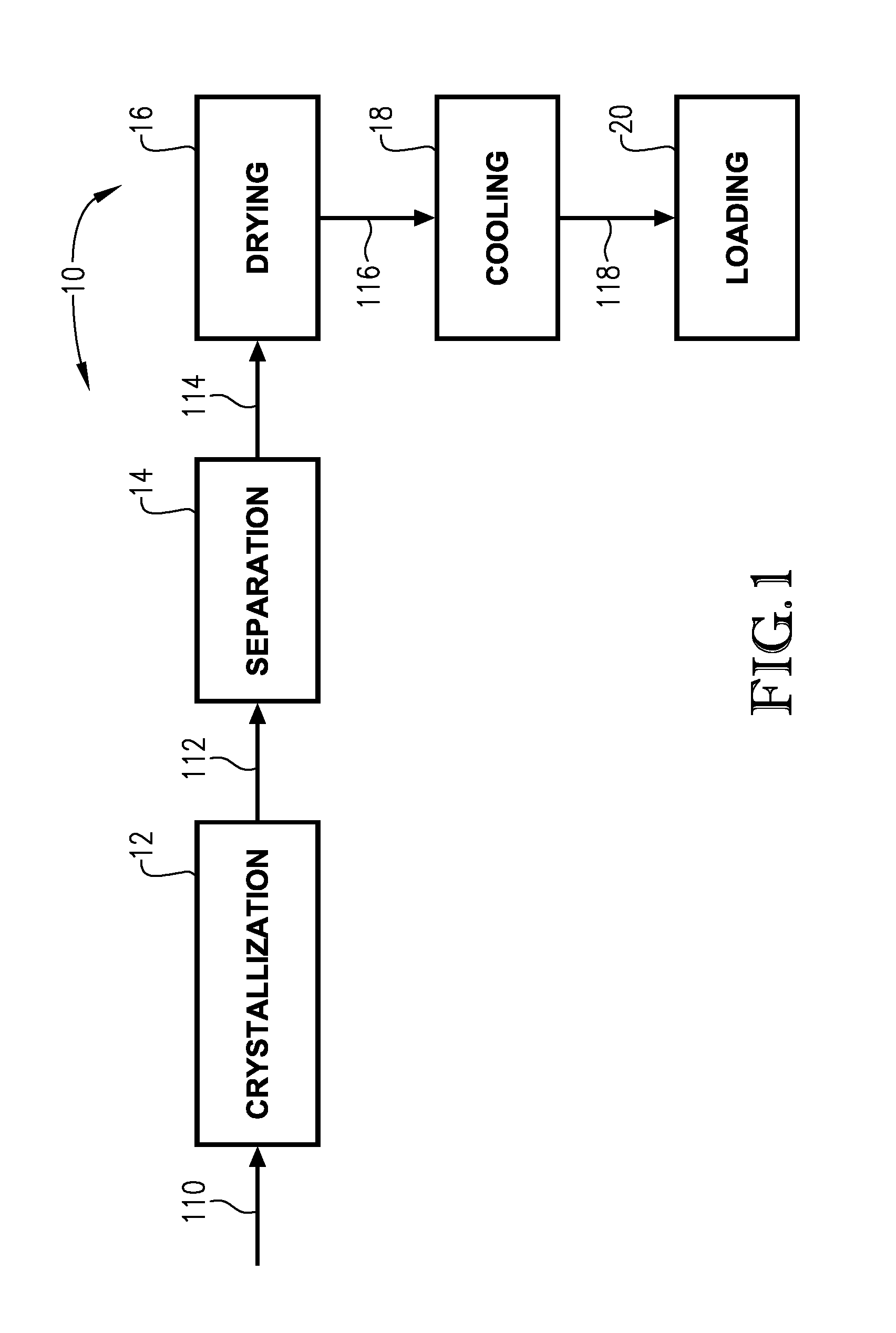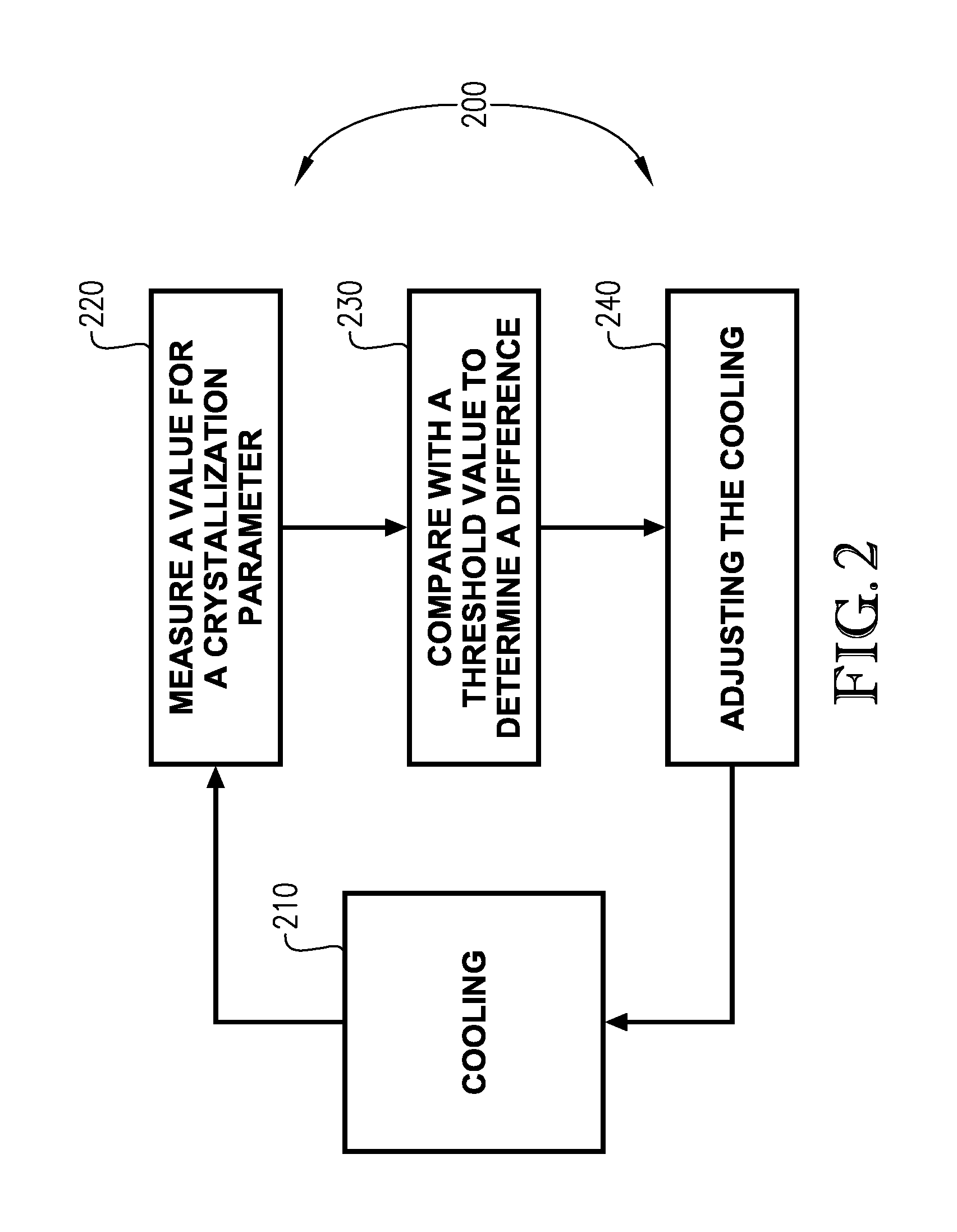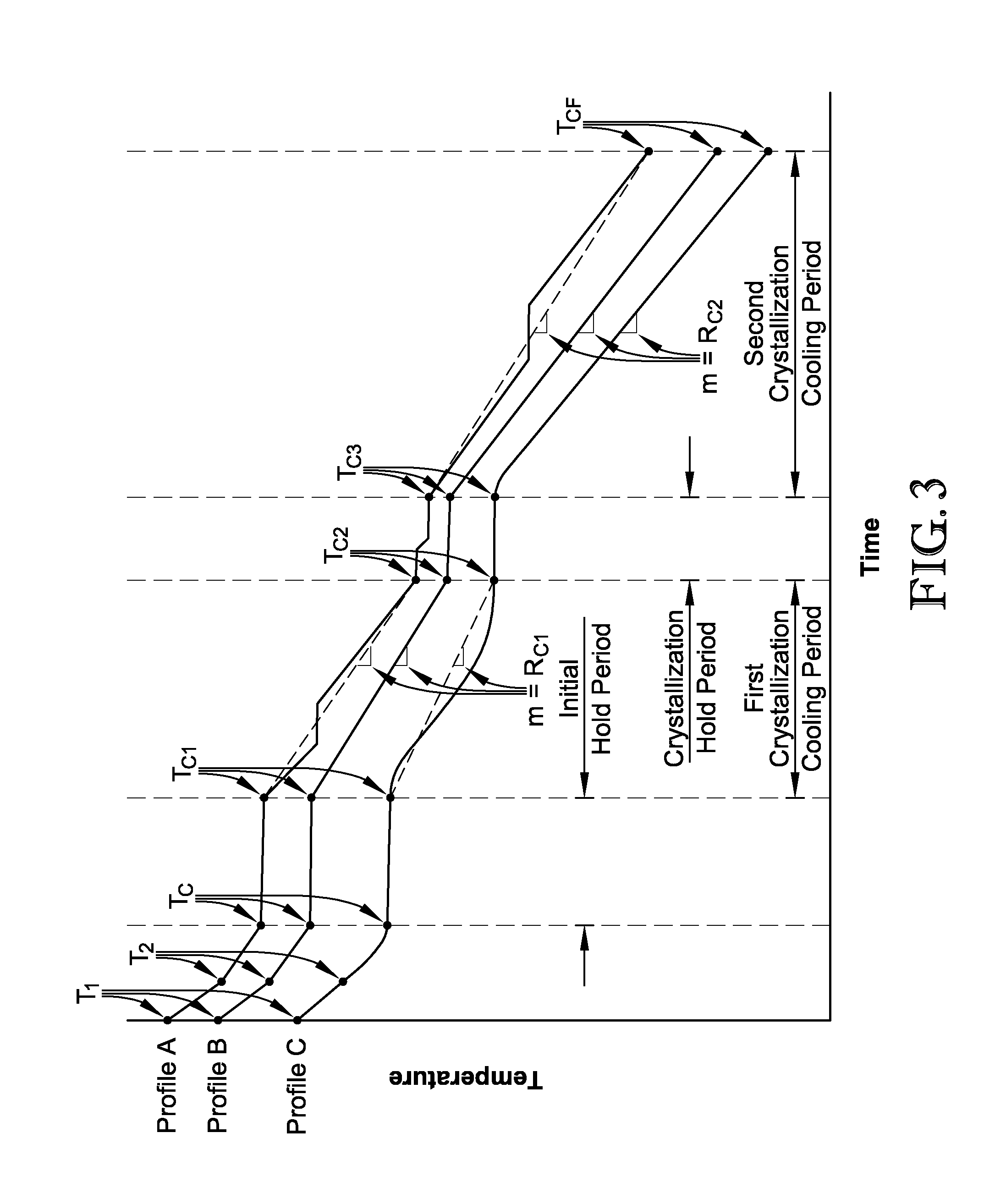Crystallized hydroquinone and methods of making
- Summary
- Abstract
- Description
- Claims
- Application Information
AI Technical Summary
Benefits of technology
Problems solved by technology
Method used
Image
Examples
example 1
Crystallization Cooling Curves
[0133]Three crystallization cooling profiles were used to cool hydroquinone-containing solutions using evaporative cooling from a crystallization temperature of approximately 66.5 to 67° C. to a final crystallization temperature of 15° C. Each of the profiles, including Comparative Profile A, Inventive Profile 1, and Inventive Profile 2, is represented graphically in FIG. 4 and Tables 1-3 below provide the temperatures and the approximate cooling rates after a given time for each of the profiles illustrated in FIG. 4. The cooling rates provided in Table 1, below, were calculated according the formula provided above.
TABLE 1Cooling Rates and Temperatures forComparative Cooling Profile ATime (t), minTemperature (T), ° C.Cooling Rate, ° C. / s067—102.4650.020204.857.50.07324239.20.49226134.10.26628029.70.23230125.50.20132022.60.15234718.30.079
TABLE 2Cooling Rates and Temperatures for Inventive Cooling Profile 1Time (t), minTemperature (T), ° C.Cooling Rate, °...
example 2
[0135]Several exemplary crystallization cooling curves, suitable for cooling a crystallized hydroquinone-solution from a crystallization temperature, TC, of 67° C. to a final crystallization temperature, TCF, of 15° C., were modeled and are shown in FIG. 5. Each of the time-dependent temperature curves shown in FIG. 5 are characterized by the formula provided in Equation (3), above, and vary from one another according to the time period, Δt, over which the cooling was modeled. The time periods for the cooling curves show in FIG. 5 range from 3 hours (180 minutes) to 8 hours (480 minutes). Table 4, below, summarizes the value of the crystallization coefficient, λ, defined according to Equation 2, above, for each of the cooling curves shown in FIG. 5.
TABLE 4Values for Crystallization Coefficient(λ) for Cooling Curves shown in FIG. 5Time Period, ΔtCrystallization Coefficient, λ(min)(° C. / s3)180−8.92 × 10−6240−3.76 × 10−6300−1.93 × 10−6360−1.11 × 10−6420−7.02 × 10−7480−4.70 × 10−7
[0136]...
example 3
[0137]Four separate batches of hydroquinone-containing solution were cooled and crystallized according to the crystallization profiles illustrated in FIGS. 6-9. FIG. 6 was a comparative cooling profile (Comparative Profile B), while FIGS. 7-9 represented inventive profiles (Inventive Profiles 3-5). After crystallization, the particles were dried and recovered and analyzed for particle size distribution. The particle size distributions were determined using a Horiba Laser Scattering Particle Size Distribution Analyzer (commercially available from Horiba Scientific in Kyoto, Japan) according to the above-described method. Graphical depictions of the particle size distributions of the crystals formed using Inventive Profiles 3-5 are shown in the lower portion of the PSD graphs in FIGS. 10-12, while the PSD graph of the crystals formed with Comparative Profile B are provided in the upper portion of each of FIGS. 10-12. Additionally, FIG. 13 compares the particle size distribution of the...
PUM
| Property | Measurement | Unit |
|---|---|---|
| Temperature | aaaaa | aaaaa |
| Temperature | aaaaa | aaaaa |
| Temperature | aaaaa | aaaaa |
Abstract
Description
Claims
Application Information
 Login to View More
Login to View More - R&D
- Intellectual Property
- Life Sciences
- Materials
- Tech Scout
- Unparalleled Data Quality
- Higher Quality Content
- 60% Fewer Hallucinations
Browse by: Latest US Patents, China's latest patents, Technical Efficacy Thesaurus, Application Domain, Technology Topic, Popular Technical Reports.
© 2025 PatSnap. All rights reserved.Legal|Privacy policy|Modern Slavery Act Transparency Statement|Sitemap|About US| Contact US: help@patsnap.com



